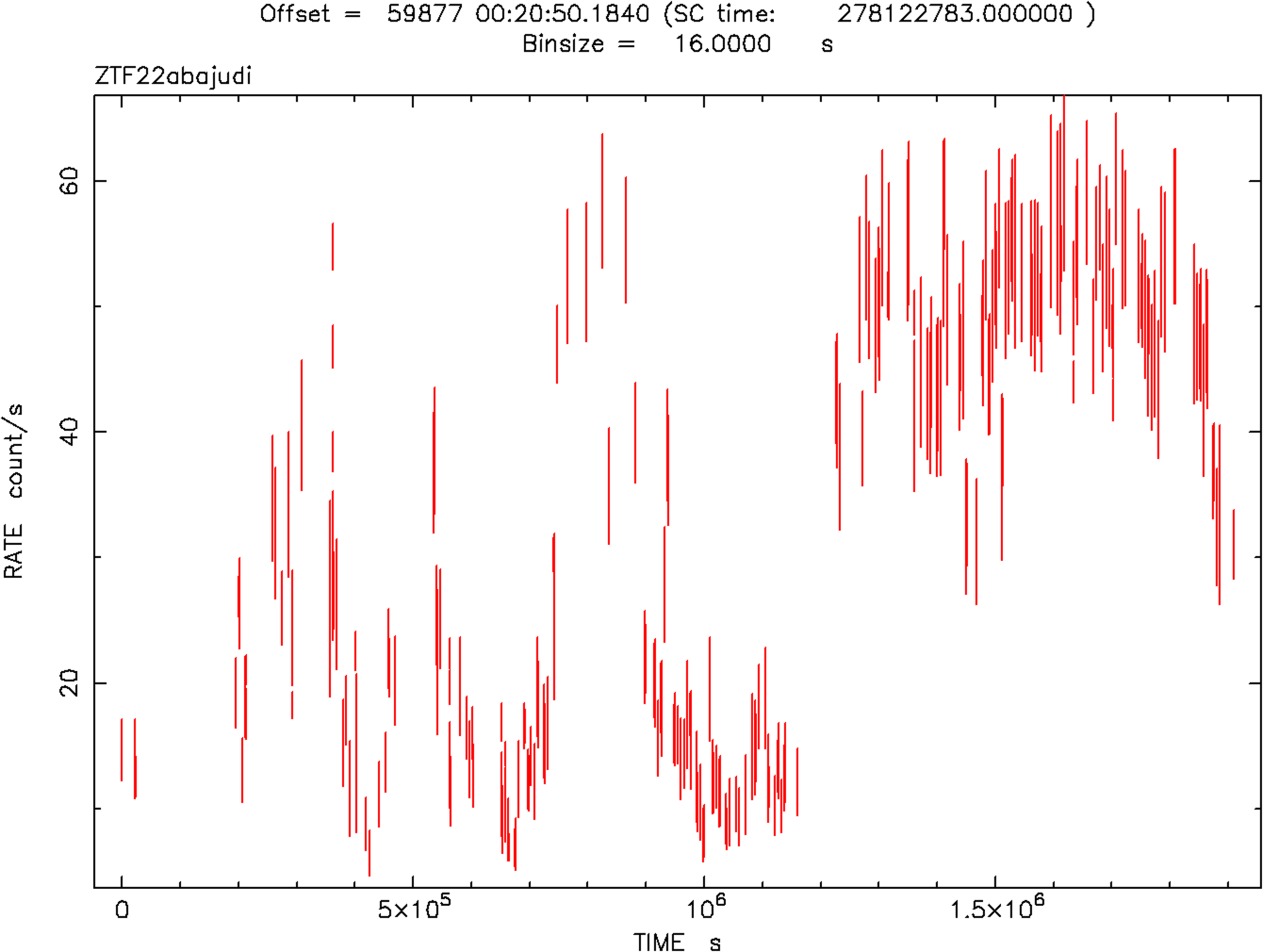NICER / ISS Science Nugget
for November 17, 2022
Highly variable X-ray emission from a doomed star
As part of a Guest Observer (GO) investigation, NICER has been monitoring a newly discovered tidal disruption event (TDE) known as ZTF22abajudi. A TDE is the destruction of a star that wanders too close to, and is captured and shredded by, a supermassive black hole at the center of a galaxy. ZTF22abajudi was discovered as a visible-light transient by the ground-based Zwicky Transient Facility at the Oschin Telescope on Mt. Palomar in California. Optical data suggest that this transient is in a galaxy at a redshift of 0.032 (corresponding to a distance of approximately 450 million light-years). NASA's Swift observatory detected X-rays from the source and a NICER GO requested that NICER follow up on the source.
Initial NICER data detected variability on a scale that would have been missed with the relatively coarse sampling planned as part of the approved GO proposal, so the NICER team decided to dramatically increase the cadence of observations to better characterize the brightness fluctuations. NICER's scheduling agility enables this capability, which can be very useful for new transients. NICER has observed ZTF22abajudi during most ISS orbits since October 24, 2022. Y. Yao (Caltech) and collaborators reported on these observations in Astronomer's Telegram #15751. Both the amplitude and the timescale of variability seen in ZTF22abajudi are rare in TDEs, and NICER is continuing with high cadence monitoring of the source.

Figure:
NICER count rate of ZTF22abajudi since October 24 shows brightness changes on hours timescales and spanning up to a factor of 8 or more; such variability is uncommon in tidal disruption events.
<< Previous
Main Index
Next >>